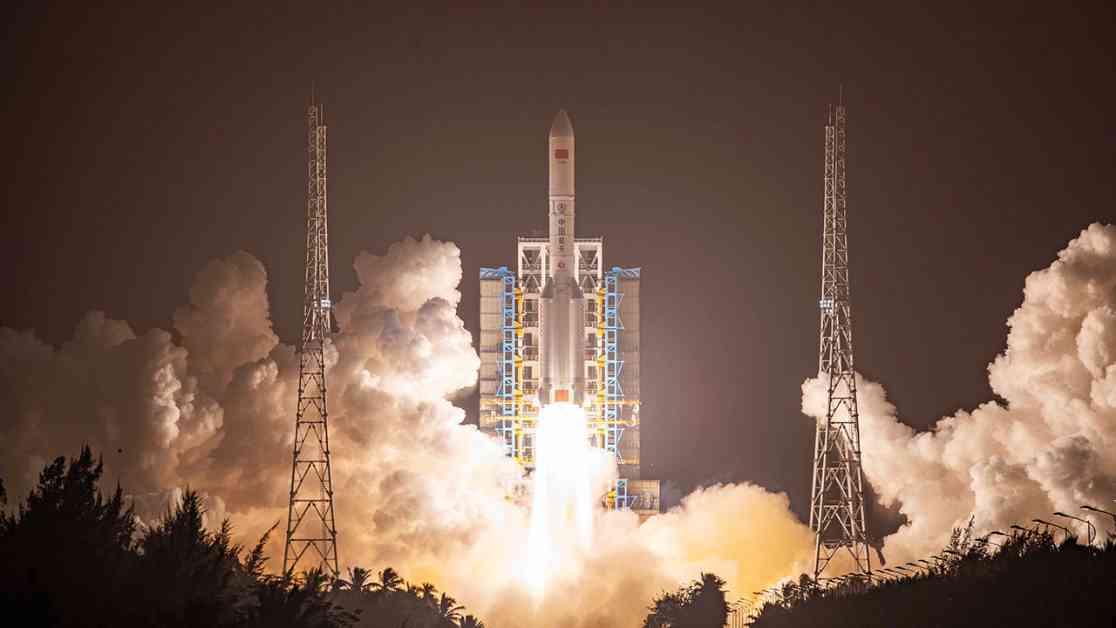China’s Rapidly Advancing Satellites: Impacts on Military Strength
China has been making significant advancements in satellite technology, particularly in the realm of reconnaissance satellites. The launch of the Yaogan-41 satellite into geostationary orbit last year marked a notable achievement for the country, as it moved beyond the typical low-Earth orbit that most reconnaissance satellites operate in. This shift to higher ground, some 36,000km from Earth, has raised eyebrows in the international community, particularly in the United States.
Geostationary Orbit: A Strategic Advantage
The decision to place the Yaogan-41 satellite in geostationary orbit provides China with a strategic advantage in terms of surveillance and reconnaissance capabilities. Unlike satellites in low-Earth orbit that pass over different parts of the planet multiple times a day, a satellite in geostationary orbit remains fixed above a specific point on Earth. This allows for continuous monitoring of a specific area, making it ideal for intelligence gathering and military surveillance.
Furthermore, satellites in geostationary orbit have a wider field of view compared to those in low-Earth orbit, allowing for more comprehensive coverage of a specific region. This increased visibility enables China to monitor potential threats, track military movements, and gather valuable intelligence on rival nations. The ability to maintain a constant watch over key strategic locations gives China a significant edge in terms of military preparedness and situational awareness.
Implications for Military Strength
The deployment of advanced reconnaissance satellites like Yaogan-41 has far-reaching implications for China’s military strength and capabilities. By enhancing their surveillance and reconnaissance capabilities, China can better monitor potential threats, track the movements of enemy forces, and gather valuable intelligence on rival nations. This information is crucial for military planning, decision-making, and strategic operations.
In addition to surveillance and reconnaissance, China’s advanced satellite technology also plays a crucial role in communication, navigation, and missile guidance systems. Satellite communication enables secure and reliable communication channels for military personnel, while satellite navigation provides accurate positioning and timing information for precision-guided weapons systems. Furthermore, satellite-guided missiles can be deployed with greater accuracy and efficiency, increasing the effectiveness of China’s military capabilities.
The integration of satellite technology into China’s military infrastructure enhances their overall combat readiness, response capabilities, and strategic deterrence. By leveraging advanced satellites for surveillance, reconnaissance, communication, and navigation, China is able to maintain a high level of military preparedness and operational effectiveness. This technological edge not only strengthens China’s military capabilities but also serves as a deterrent to potential adversaries.
Challenges and Concerns
While China’s rapid advancements in satellite technology have bolstered their military strength, they have also raised concerns among other nations, particularly the United States. The deployment of high-altitude reconnaissance satellites like Yaogan-41 has sparked fears of potential espionage, surveillance, and strategic threats posed by China’s expanding satellite capabilities.
The ability to monitor vast regions from geostationary orbit raises questions about the extent of China’s surveillance activities and the potential implications for global security. The United States, in particular, views China’s satellite advancements as a challenge to its own military dominance and strategic interests. The prospect of China gaining a technological edge in satellite capabilities has prompted calls for increased vigilance, monitoring, and countermeasures to safeguard national security.
Furthermore, the dual-use nature of satellite technology raises concerns about its potential military applications, including the deployment of satellite-based weapons systems. The ability to target and track enemy forces from space poses a significant threat to global stability and security. As China continues to expand its satellite capabilities, the international community must remain vigilant and proactive in addressing the potential risks and challenges posed by advanced satellite technology.
In conclusion, China’s rapidly advancing satellites have significant implications for military strength, strategic capabilities, and global security. The deployment of reconnaissance satellites like Yaogan-41 in geostationary orbit provides China with a strategic advantage in surveillance, reconnaissance, communication, and navigation. While these advancements enhance China’s military capabilities, they also raise concerns about potential threats, espionage, and strategic challenges. As China continues to push the boundaries of satellite technology, the international community must remain vigilant and proactive in addressing the evolving landscape of satellite-based warfare and security.



























